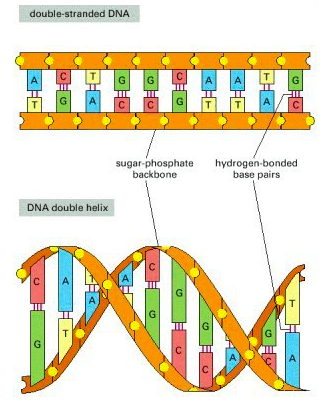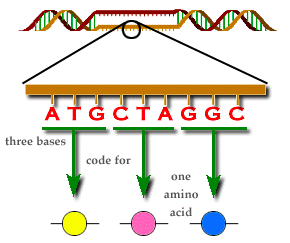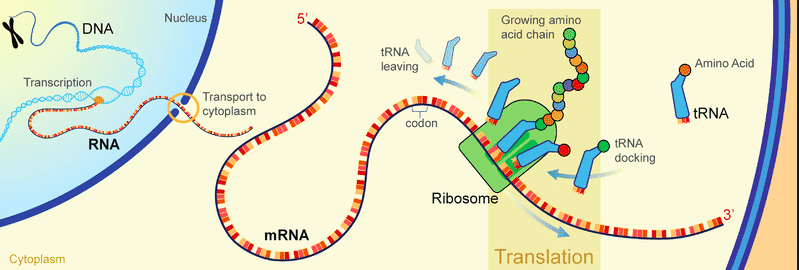DNA
What Is DNA
Inside of the nucleus, we can find genetic material that is made up of a chemical called DNA.
DNA is a polymer that is made of two strands coiled to form a double helix.
Nucleotides consist of a sugar and phosphate group with one of the four different bases (A, C, T or G) attached to the sugar.
Nucleotides join up together, allowing them to form two strands - this makes up the double helix. The strands are linked by a series of complementary base pairs joined together by weak__ __hydrogen bonds. The bases are always paired together in a specific way:
- A always binds with T
- C always binds with G
This contains the genetic code, which then determines the characteristics of a living organism.
A genome is one copy of all of the person’s DNA. It contains unique information about the individual person.
Extracting DNA From Fruit
Kiwi is a common fruit that scientists will try to extract DNA from. Here are the instructions to extract DNA from a kiwi:
- Remove the skin of half a kiwi, then mash up the flesh
- Add a teaspoon of salt and a small amount of washing up liquid into the mashed up fruit. Mix this all up
- Heat this mixture for 5 minutes at around 60 degrees
- Use a funnel and filter paper to filter the mixture. You will need to keep the filtrate (the liquid)
- Cool the filtrate in an ice path and gently pour cold ethanol onto the top of the filtrate, from the side of the container
You should be able to see strands of DNA when the ethanol and filtrate meet.
Coding
Each gene leads to a set of instructions to create a specific protein.
These proteins are vital as it controls many aspects of the cell.
The bases must group together in triplets in order for genes to code for proteins. Each of these triplets of bases codes for a specific type of amino acid. The amino acids can only be made based on the number and order of the base triplets.
Amino acid molecules then join up into a long chain, creating a protein molecule. The number and order in which the amino acids are put together will then specify which protein is created.
Enzymes are a common and vital protein that is created from these long chains of amino acid molecules.
Protein Synthesis
During protein synthesis, transcription__ takes place first, followed by __translation.
Transcription:
- RNA polymerase__ __binds to non-coding DNA located in front of a gene.
- RNA polymerase produces a complementary mRNA strand__ __from the coding DNA of the gene.
Translation:
- begins to take place after transcription, as the mRNA__ attaches to the __ribosome.
- Then there is the coding by triplets of bases (codons) in the mRNA for specific amino acids.
- Amino acids are then transferred to the ribosome by tRNA.
- Finally, amino acids link together to form polypeptides.
Genetic Variants
Genetic variants in the non-coding DNA of a gene can affect phenotype by influencing the binding of RNA polymerase and altering the quantity of protein produced.
Genetic variants in the coding DNA of a gene can affect phenotype by altering the sequence of amino acids and therefore the activity of the protein produced.
- What is the shape of DNA?
- Your answer should include: double helix / two / 2 / identical strands
Explanation: A double helix that is made of two identical strands - What are the letters of the 4 base pairs?
- Your answer should include: A / T / G / C
- What do three bases code for?
- amino acid
Explanation: One amino acid


